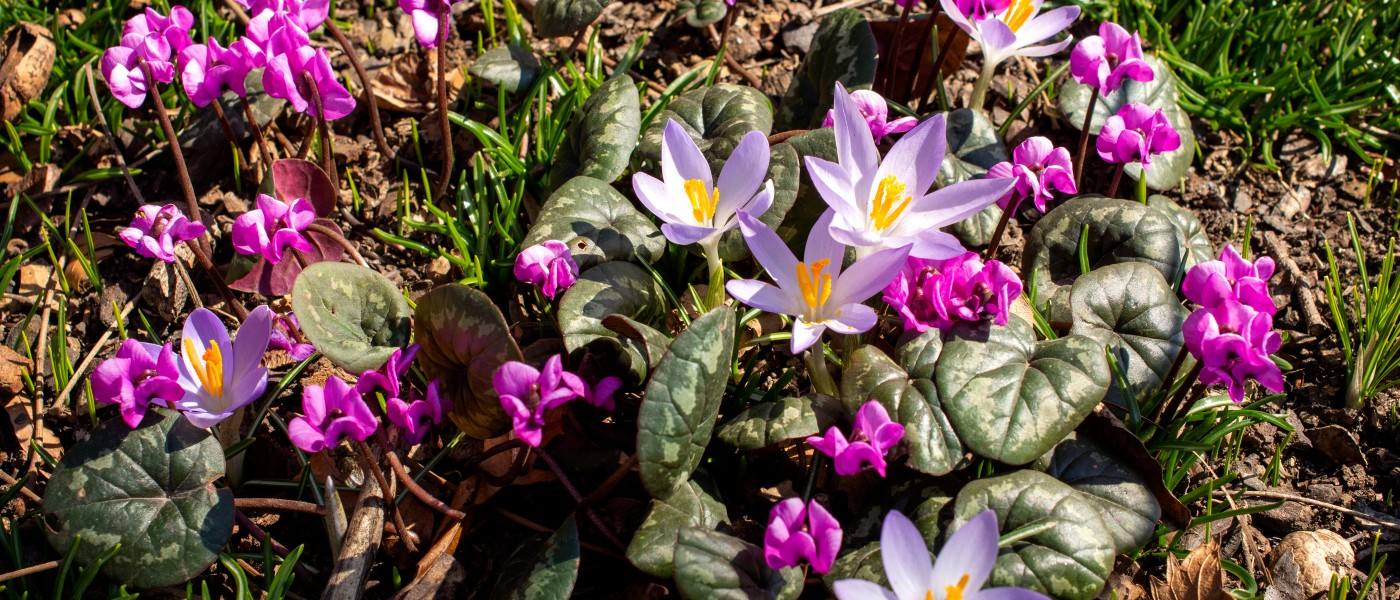Signs of Spring
There’s still a chill in the air, but the Conservatory is in full bloom, and some early-spring highlights are beginning to pop. Here’s where to look:
Warm Temperate Pavilion
The best time to visit the Warm Temperate Pavilion is between January and April. Upon entry, visitors are immersed in colorful blooms and the scent of fragrant olive, citrus, and other sweetly scented plants.
Look for
- South African bulbs. Most of the geophytes (commonly called “bulbs”) in BBG’s Warm Temperate Pavilion are native to South Africa, specifically to the Cape Floristic Region on the country’s southwestern tip, a biodiversity hotspot. Their bright and delicate blooms are best seen in February and March.
- Heart-leaved pelargonium. Pelargoniums, whose hybrid forms are often known as geraniums, are beloved by gardeners around the world, but most species are native to southern Africa. Learn more about the history and ecology of Pelargonium cordifolium, a fire-adapted shrub with heart-shaped leaves and blooms.
- Caper bush. Did you know that capers are the immature bud of a flower? Left unharvested, they transform into blooms that hold a cluster of long purple stamens.
Late Winter and Early-Spring Bulbs
In January and into March, delicate bulbs begin to dot the landscape. White snowdrops (Galanthus sp.) and hellebores (Helleborus sp.) bloom throughout winter, followed by winter aconites (Eranthis hyemalis) and eastern cyclamen (Cyclamen coum) in late winter. Dramatic drifts of purple crocus, often seen in March, are a crowd-pleasing early sign of spring.
Entry Garden
Near the Flatbush entrance of the Garden, you’ll be greeted by hellebores, camellias, and dawn arrowwood (Viburnum × bodnantense ‘Dawn’). Keep an eye out for the amazing bloom of the paperbush (Edgeworthia chrysantha), whose beautiful silvery buds open in a burst of yellow in late winter and early spring.
Don't miss:
Pussy willows blooming. Pussy willows—in the willow family, Salicaceae—have an unusual and fascinating bloom. Around March, fuzzy catkins open up in a burst of colorful pollen-bearing stamens. Check them out in the Discovery Garden and Water Garden.
Magnolia buds cracking open. Over on Magnolia Plaza, magnolia trees are preparing for their annual show. Peep their furry buds as they start to expand and open up.
Everblooming cherries. BBG’s everblooming cherry trees (Prunus ‘Fudan-zakura’) bloom, as the name suggests, on and off throughout the year. Check them out in the Japanese Hill-and-Pond Garden and on Cherry Esplanade.
And stay tuned for early-spring blooms: magnolias, cherries, tulips, and woodland wildflowers!

